3. March 2020

Use the variety of perspectives in your company to become more creative
How do we become more innovative?
This question is becoming increasingly urgent for many companies to keep up with the competition. Without innovation, time is running out for many companies.
The countdown is ticking:
- Is your company already in the starting blocks to »launch« the next innovation?
- Where does the innovative power in your company come from?
The potential for innovation have many companies. It is important to exploit this potential and thus strengthen the company from the inside out. This can mean giving space to lateral thinkers and also taking uncomfortable paths at times. With a disruptive, innovative force, even a monoculture can open up – and thus gain new, innovative perspectives.
Monocultures have a comparatively low complexity – and produce reliable, but also rather boring and predictable answers. Diversity, on the other hand, increases complexity; it counteracts simplifying response patterns – thus providing »blurred« answers with higher ambiguity. This is more demanding – but it also opens up the prospect of better, more groundbreaking solutions.
Learning to ride the tiger – jumping towards more innovation
A plausible thesis is:
»A company can only serve the market that it can internally map.«
This is how Dr. Rüdiger Müngersdorff from the management consultancy SYNNECTA, our cooperation partner in organizational development, puts it.
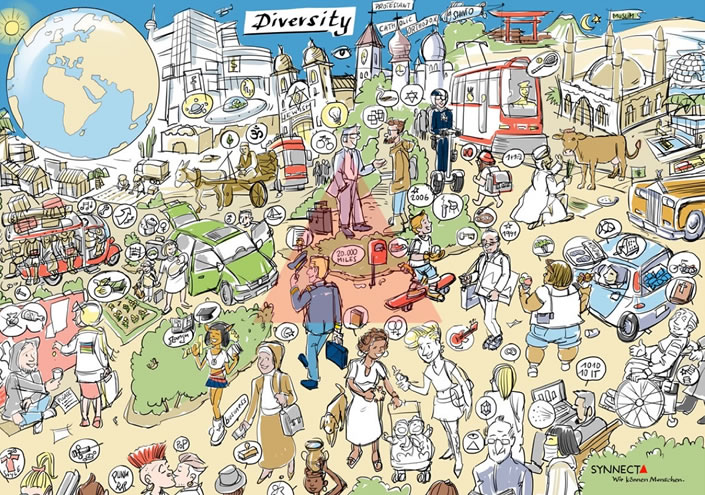 Illustration: SYNNECTA Diversity Insight Map®
Illustration: SYNNECTA Diversity Insight Map®
SYNNECTA’s Diversity Insight Map® is a tool with which people are encouraged to engage in dialogue. The topics around diversity become visible and can be discussed.
A healthy diversity in the company does not only ensure that the products and services fit the market. It also promotes a forward momentum within the company that triggers new dialogues and generates ideas. The aim is to constantly rethink and reflect on one’s own certainties and thus be able to act tomorrow.
»Tensions in the company should be good?!« you might ask yourself now. – It is useful to differentiate two types of tension:
- A negative tension describes, for example, a climate of fear, of isolation or personal intrigue. Here, people feel insecure, shut themselves off and tend to only »work to rule«.
- Positive tension, on the other hand, refers to the creative energy generated by allowing different perspectives. Creative processes are not self-propelling, but usually hard work. The joint struggle for the best solution, overcoming mental barriers – the proverbial »out-of-the-box thinking« – all this requires a certain productive tension.
Even agile work or methods such as »design thinking« actively use non-conformist or external perspectives to increase the diversity and thus the creative tension within the system. Those who want to make their company the driving force behind innovations – even disruptive innovations – must not only endure this creative tension, but also actively use it for design purposes. In the free interpretation of a Chinese proverb: You must learn to »ride the tiger«.
Why does diversity become an essential concept for companies?
Promoting diversity in the company is one of the approaches to boosting creative, positive tension. Diversity is a collective term for a multitude of differences. At least the following so-called »diversity dimensions« can be differentiated:
- Cultural differences, often in the sense of ethnic-cultural or religious differences, are regularly understood as relevant differentiation.
- In society, disability is all too often a stigma that leads to a disregard for the potential of people with disabilities – a naive waste of resources from a company’s point of view.
- Gender: The »small« difference between man and woman is clear to everyone. Since 2017, the German Supreme Court (Bundesverfassungsgericht) has distinguished people who do not assign themselves to either of these two categories (official term »diverse«). Reality has always looked more colorful. »Girls play with dolls – boys with cars.« True, if you keep in mind (and preferably say it, too) that many girls also play with cars and many boys with dolls and figures.
- Age: We were all young once – and the hope unites us to become old. But that doesn’t save companies from inter-generational conflicts and misunderstandings in the workforce. Demographic change is fueling this tension: especially when young employees lead older employees – or when the »young« do not feel understood by the »old« – the difference in age suddenly becomes relevant for cooperation within the company.
- Sexual identity or orientation: »It’s a private matter after all« is the cry of naïve conformists. As those belonging to the majority frequently do not understand the concerns of the minority. But it’s not that difficult: Those who feel they have to hide »the private matter« in everyday life in the office or factory hall will be more secretive and focus their energy on secrecy – instead of on the next innovation in the company.
A decisive advantage for entrepreneurs: studies show that diversity in a company benefits them economically. Companies with high diversity are more innovative, have a stronger employer branding and a better working atmosphere. In short: diversity creates dividends.
To innovate you need to understand perspectives and recognize needs
If you want to strengthen the innovative power in your company, you should be able to change your perspective when searching for innovative opportunities. All too often, innovation processes begin with the question: »How can we improve our product?« – Sounds reasonable, but puts the cart before the horse. The initial question should rather be:
- What solution does the customer desire from our offer?
- What problem does our offer solve for the customer?
- From his/her perspective, what becomes easier, faster, better, cheaper …?
This »101 of product development« (but also of sales, marketing, service) is unfortunately often forgotten and many companies first look at their offers from the »technical« side. The result is technical improvements – but they often do not provide any noticeable benefit to the customer. The key question is: »What additional benefits does the innovation create to the customer – from his/her point of view?« Every innovation must pass through the bottleneck of the customer’s perspective – otherwise it is not an innovation but only a variation. In short: Start with the customer’s perspective – not that of your offer!
An example from the DIY (do-it-yourself) sector: Instead of further improving the existing drill from your range, for example by increasing the speed or lowering the price, you might come up with the disruptive idea of developing a strong adhesive strip – after you have understood that most people in the household only need comparatively tiny holes to hang up light objects (towel hooks, pictures, wall mirrors).
But this change of perspective requires at least two skills: On the one hand, you need to be able to cognitively engage with the customer, his context and his challenges. On the other hand – and this is often the difficult part – you have to be able to feel his emotional situation (his »pain«). You need to be able to sense the different needs of the client. So you need a high degree of social empathy.
And this is where diversity and diversity management come in: The more complex my internal cosmos, which I have to manage in my company, the easier it is for me to understand the complex worlds of my customers. Consider: A range of services for women – designed only by men; a machine for the Indian market designed only by German engineers; a range for young people designed only by »old hands«? – Yes, anything is possible, but the chances are high that the target group’s needs will not be met. More promising is the approach of integrating diversity and complexity into one’s own processes at an early stage.
Why diversity promotes agility in your company
Diversity expert Hanna Göhler points out that for agile organizations, the competent handling of diversity is an important prerequisite for being able to use the potential of agile methods. Agility is a cultural issue. She puts forward the thesis:
- »Only those who are aware of diversity in the group, appreciate it and make it usable, can be and work truly agile. This makes diversity a topic of system, culture, leadership and individuality.«
More on this in her readable article »Why agility and diversity belong together«. There she also explains the concept of »diversity learning« as part of a learning culture towards more agility. Hanna Göhler writes:
»Ambiguity tolerance« (i.e. the ability to tolerate ambiguities and differences or even better to accept them) is regarded as a characteristic of diversity awareness. It is also indispensable for the agile mindset. If this ability is lacking, people react to ambiguous and often uncontrollable situations in an agile setting with »linear thinking«. They fall into rigid, old, traditional patterns, the opposite of »being agile« and constructive diversity learning.
How do you set a base from which innovations can grow?
For managers it is important to create a common base and a stable framework in which the creative tension can stimulate ideas and does not become destructive. This also addresses questions of corporate culture, which should be characterized by trust, open feedback and a pronounced sense of community. This is the only way to build bridges and avoid typical silo thinking, e.g. between departments or teams.
Support the diversity and the overarching exchange within the company. Invite open dialogues and disruptive ideas. In workshops and at larger events, focus on the potential that lies in cross-hierarchical, cross-functional or cross-regional exchange. Allow a little more »colorfulness« in the company and make sure that your company is a place where positive tension can unfold its creative power.
For futher reading (in German):
Daniel Goetz
This article was first published by the author in agateno’s blog at www.agateno.com.
Photo: Matthew Schwartz by unsplash.com
16. January 2019
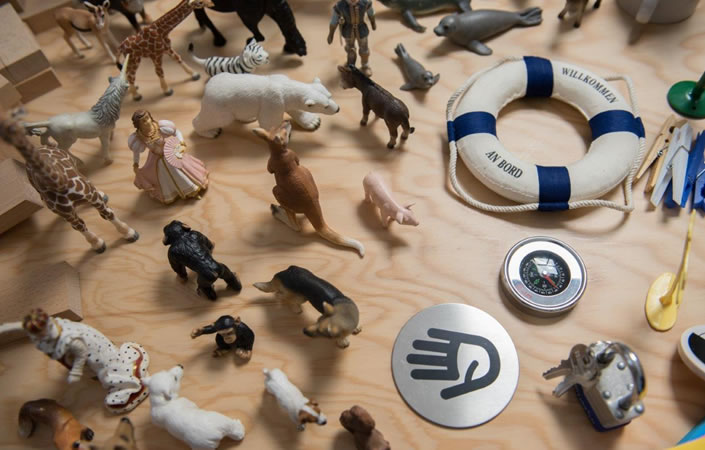
A Beginning
There’s so much to say.
A lot about: New Organization, New Work, New Mindset.
Five years ago, a brief speech would have sufficed. Now, there’s so much more to talk about: there are too many facets, too much variance. Let us highlight only a few of the aspects that we have encountered in our internal discussions and client conversations.
We see much that is steady, but also encounter change, experiments, transgressions, innovative approaches. This is happening on all levels: companies establish new forms of organization, groups experience new dynamics of social cohesion, individuals have new life designs that do not follow the career mainstream.
What’s driving it all?
At first glance, companies might be driven by the fear of losing touch: losing touch with Chinese dynamism, maybe. They may also be driven by a loss of trust in the European success story: systematic planning, project management and cascade plans used to be so successful. Maybe they are driven by a reluctance to believe the prophecies made by strategic departments? Maybe it’s the need to confront the fact that people are doubting management quality? Might it be the very wide-spread loss of trust in the »elites«? And maybe, because that much is clear as daylight, it is the fact that we are ever more frequently confronted by non-linear, dynamic, non-deterministic systems: on the markets, in competition, in society, in the communities of our own companies. All of that after we had worked so hard to design our world in a linear, dynamic and deterministic way. All the whys and wherefores will not give us a single cause. We can however, find out about conditions, conditionalities, relativity and relations.
One condition for NEW WORK is immediately apparent. There is a trend that has long been on a steady rise, both globally and in our society: more and more individual freedom. This is particularly apparent in urban realms with their minimum of social control and many pockets of difference within which groups and belonging are free to grow.
Self-determination is the name of the game: a person’s own individuality and its recognition by society; what used to be known as self-realization. Fashionable motivation theories call it autonomy and learning (growing) now, and link it to the notion of being purpose-guided. It has become an elemental aspect of business culture. Purpose has replaced the notion of creating vision and mission. This underlines the challenge at the very core of the situation: how do we strike a balance between individual and joint needs, and how do we give that balance some stability? How is it possible for an individual’s purpose to be shared, and how much stability can this have? Lurking behind these questions is the link between solidarity and individual identity. Individuality and the quality of communitization are interlinked, and together they make the new forms of working so interesting, so exciting and at the same time so challenging. We are in the process of abandoning big brother and his shelter.
This freedom of the many, the vivid diversity of multitude obviously pushes complexity. In permitting this diversity and these individualities, we become aware of the loss of a binding moral institution that gives us shelter. The yearning for such an institution is apparent on the political level as well as inside companies. Unfortunately, it is a quest that is not forward-looking but instead linked to a growing yearning for the old style of authority; psycho-analysis speaks of father figures who will fix everything. New Work is taking another path; New Work wants to design a form of freedom that also permits collaboration and community.
Let us highlight some aspects that we encounter in our work; there are no simple recipes.
Agile organizations essentially constitute the quest for an organization that is able to adapt fast, reduce its inwards gaze and enable effective outside perspectives within small units. Decades ago, Zygmunt Bauman already referred to this notion as a fluid organization. We have the blueprints, but the social and psychological dynamics of such organizations bring out many unresolved issues.
Not everyone likes such a change, there are sceptics, there are defendants of durability (they are usually men) who are worried about their loss of power. Let us move beyond those trivial aspects of our work in order to discover more:
Escaping into method
Methods are useful and necessary, but they are at best half the ticket. We are somewhat amazed at how reliably the available set of methods is expanded more and more, in order to eventually lead back to the very landscape of tiny processes that was supposed to be reduced or even abolished by way of the new organizations. Method descriptions provide safety, they relieve individuals from the burden of design and they are often an escape from freedom. We need freedom, however, if we want to achieve flexibility and the wealth of diversity. Methods are too often an escape from the opportunity to be effective and the responsibility that comes with it.
Lacking group dynamics skills
What happens when we even out hierarchies and script each person’s role in such a way as to enable individual responsibility? We lack a grasp of group dynamics and socio-dynamic processes. We are enticed by empathy, but that is difficult in itself and moreover does not suffice when people are left alone to design informal social leadership processes that per definition do not offer emotional support. It’s time to learn group dynamics skills. Informal leadership opens the floodgates for egotists and narcissists; we are all aware of the damage bullying can do from schools. We need to learn group dynamics by experience.
We want your soul, your heart
This becomes more important as the division between work and private life is increasingly blurred. We are joining two identities that used to be separate. We are doing so because we have learned that new organizations need the whole person and not only the time that they are willing to give up. The old deal was easy: a person gets money and security (the famous golden watch at the end) and in return the company gets an agreed amount of time, obedience and loyalty. We cannot maintain that approach as soon as we start to believe in the motivational force of a purpose, that a human being will become wholly involved because their own sense of self and that of work are ever more congruous. It is not possible to buy a person’s heart and soul. In order to enable people to fully commit themselves, a company needs to offer more: places, rooms, spaces, relationships, social structures, concepts that provide meaning. This includes the freedom to take up an offer for a limited period of time as well as the freedom to leave again. In the long-term, company boundaries will become more fluid. Their pull as a »place of life« will gain significance.
Purpose is finite
Purpose often arrives with some gravitas. It likes to have a never-ending touch. That is limiting. We’re not here on a journey of life to find one single purpose that we have to follow. Our energy and our commitment finds many meanings and purposes, as well as social groups in which to live these. They will guide us for some time before we leave them behind for something else that carries more meaning in a new phase of life. This relates to the second meaning of Zygmunt Bauman’s notion of a fluid organization. As persons, we are fluid within our organizations, and at the same time increasingly also between organizations and even between different life concepts. Companies are tasked with constantly creating and recreating new places and structures that are inviting and that offer a range of meanings and purposes so that they can attract people looking for meaning and purpose. We need to learn to understand that fluidity itself is a stable state.
Psychological focus
In our tradition of work, we consider the psychological focus of a person and their constitution highly significant within moments of change. How do people learn their part, find their potential within new environments, how do we give them the opportunity to re-invent themselves even in ways that were hitherto inconceivable? We need, for example, to cut deep down into the coaching and leadership training systems and their rarely challenged normative basic assumptions. By working laterally and looking into lateral possibilities, we abandon the previously dominant vertical outlook, which still shapes the career usually offered by organizations. Career was until now coupled with the hope and pain of ascent. It will receive a new definition: career is ever more about the ability to keep finding attractive places, to consider oneself fluid. However, this is where companies soon reach the boundaries of their society: it is still the as-cending heroes who are the heroes.
How do we learn?
We have reached a question: what are the concepts of life that we are forming people for? Gregory Bateson’s differentiation between the first and second order of learning is gaining relevance. The PISA-guided approach is hardly going to bring us forward, because it does no more than train and teach what is tried and tested – in an old and stable world. We need to learn for a new world, for that which we have not yet practised. That means that we need to open up towards a sector of our society that we like to put into a category of itself, an isolated place of the lucky few: the arts. The arts can teach us more about the future than any strategy and marketing department of large companies and consultancies can. Long before companies were able to name what they now call VUCA, a performative turn showed us the significance of an event, a disruption, and what it means to be able to act in flow. Modern-day managers have become rather hostile towards the arts, however.
The Joy of Difference
Another increasingly apparent issue is diversity and what it entails. This key word is about more than sheer statistics – quotas for women, Indian employees, LGBTIQ*s, etc. We are learning to respect each other, we are learning to address difference and to act in such a way that we are more likely to find wealth than exclusion. Agility is not truly possible where diversity has not been addressed. It begins with those little differences that used to be ignored in the old world of work (separation of work and private life). Significant energies are stifled by silence and the absence of a platform for expression. Working with so many different Asian cultures, I have learnt that we have not really achieved anything until people say »you have touched my heart« and until they have touched my heart. That is the point where we begin to have respect for each other and are therefore with each other.
Mindset Change, that Magic Formula
Sounds simple. What is it about? There are many ways to describe it. It includes shifting from inside–to-outside thinking and acting to outside–to-inside thinking and acting. It includes moving from being a prisoner of the inbox to opening the outbox. Are you aiming to come forward or to come along? Whichever way it’s phrased, it is always about moving away from a self-centred perspective. It’s hardly a world-shattering innovation, but it is nevertheless important because the ego-maximisers have been at the centre of the economy and of economic science for too long. Ego-maximisers have been engaged in a battle for dwindling resources, and have been considered the guarantors of dynamism, while the cooperative members of a community were the dull members of a herd. This is Darwinism at its simplest; many realized early on that a true egotist must abandon egotism in order to cooperate and base their success on cooperation. The Christian world used to follow the adage that it is better to give than to receive. Cooperation is not another method or a new trick of egotism following Buddhist self-optimization concepts. It is the experience that joy, fulfilment and happiness can be found in collaboration, in the very reduction of the self. That which we now know as cooperation or collaboration can change the underlying structure of our own thinking and emotion by bringing us out into the world. This enables us to overcome difference, boundaries and belonging in order to create something new.
Reciprocity
I enjoy thinking back upon my conversations with Helm Stierlin, one of the founding fathers of systemic therapy, who understood cooperation to be an act of reciprocity. Cooperation was not a deal, but a struggle based in a relationship that gives the other person freedom. This appears to juxtapose the thesis of individualism, because the new forms of work hero-worship the collective. We act out our individualism within collectives, joining groups that allow us to feel accepted as we are and switching them according to the evolution of our identity.
In doing so, I retain my individuality in reciprocal cooperation and am at the same time part of a collective the carries responsibility for the whole. There is a spiritual aspect to be found here in the apparently abstract discussion of mindset: the notion of interconnectedness resonates strongly with the realization that the world we live in does not follow a linear and deterministic dynamic.
Can we think companies politically (after all)?
Everything we do these days is too little. We need to delve deeper into the way in which the future is addressed in companies (future means market, product, process, strategy, etc.) Agility is the ability to react fast and flexibly to change and to be able to act in forward-looking steps. If we take this concept and anchor it only in the operative units, then we will still be slow and remain likely to chose the paths that used to be successful in the past. The oligarchic structure of the company, where a more or less homogeneous group of people have long been separated into large programs (and have forgotten south, west and east in the process) and are the only ones to define the topics of an organization, leaves no room for New Work.
Organizational development needs to ask who is allowed to speak, who is heard, who has places to speak and to be listened to? This is a genuine process of discourse. It includes many different people in decisions that guide what will happen in the company and on the markets. It is hardly going to mean participation in ownership, but it will mean real participation in the design of the community that defines the company by way of active commitment. Our concepts of cutting out paths have demonstrated easy-to-follow ways that disrupt the oligarchic nature of companies and thereby give room to voices that are more likely than those of the long-serving managers to understand what the future will mean and where the company can find room for itself and its services within that future.
Last but not least, how do we change our own inner attitude to that which is new to us in these concepts of life? How do we understand what we are about to face? Let’s take a detour into the world of popular music to meet the heroes of a generation that doesn’t even have a letter yet.
Demographics – how radical are the changes to our life designs?
BTS is a Korean boy band (the first Korean band to reach number 1 in the US Billboard Charts with their song Idol). They are an utterly designed boy group. Every piece of information about them, their every utterance and movement is choreographed or curated. At the same time, they are the only K-Pop band who send political messages. Those messages are all about individualism at their core: be yourself, whoever you are or want to be. Their videos offer a range of models for identification (These groups always offer a range of types; imagine what it would do if we began appointing board members by that logic!) as well as a message of inclusion: you are a part of us, we are diverse and you belong. Their videos entail representations of a hyper-inclusive aesthetic. Their performances no longer differentiate between the surface (the performance) and real identities: the surfaces is all there is. Beuys has entered youth culture.
It simply disables profound thought – that which has foreground and background, appearance and essence, deep-seated platonic structure. There is no point to asking what’s behind it all if the surface is all there is.
What does that mean for the world of work? Is it the dissolution of a difference between a private and a work sphere? Is it the end of role play and therefore a new kind of authenticity? Are we seeing places of work that have become places of living where identity is formed and lived? Places of work as experience spaces that are accomplished in faster steps? Is it the weakening of continuities in favour of breaches and leaps? All of these are also aspects of New Work.
Let’s look at recent coaching experiences. Which life design blueprint do I use for my questions? How much is the whole setting still shaped by old company expectations? In her autobiography, Michelle Obama wrote about her grandfather, in whom she witnessed the bitterness of shattered dreams. I often encounter this bitterness among the middle management of large companies. While this bitterness can be sensed in the background of organizations, the world of the young is propelled forwards by the force of dreams. Let us follow the hope and not the bitterness.
Appendix: Accompanying Stories
I.
Silence in the group. The silence lasted for over an hour. They were traumatised. It had started so well: working without hierarchies, working in small groups with joint interests, being able to do what they always wanted. Then came the blows: projects that were considered promising by the group were terminated for a strategic lack of budget. How does one part? How does one deal with being redirected, suddenly placed in projects and groups that are not the first and free choice? Group dynamics developed; informal leaders emerged. The latter had good social skills of manipulation, but were not really fit to meet the task of steering a group. There followed the organization’s desire to create real freedom from hierarchy and therefore the introduction of peer evaluation. That was the last straw: the group fell silent and had lost all their energy and initial commitment.
II.
I talked to a works council member who was deeply concerned. Looking into the room, he saw that all the organized workers’ achievements for ergonomic improvement had been lost. Staff were sitting on wooden pallets, the scattering of available tables were completely unsuitable. He wondered what their backs will feel like after twenty years of working like this? The young people are removed from us, they no longer understand that works councils oppose the company in order to fight for a better solution for them. They deliver their fate to the masters at the very top.
III.
During a coaching session, I met a very talented team leader who had just been notified by the CEO that he would be called up to the board governing a department that was set to be crucial in the future, skipping all steps of the hierarchy. At our first meeting, we spoke a lot about theatre and even more about literature. We compared our reading experiences in a delicate and extremely lively conversation. A year later, I found the same man still full of fire and energy, and I talked to him about what he had read in the last few months. He paled when he noticed that he had only been reading management guides. On reflection, he realized that his truest sense of ‘leadership’ came not from the guides but from the deeper layers of literature. He is reading again.
IV.
A manager is utterly perplexed. There is a highly talented woman under his leadership who does much more than is her due or within the scope of her position, and does so successfully. Being a caring person who champions fairness, he fought for her promotion and was proud to offer the young lady a better position. He expected her joy and gratitude, but received instead a friendly but decided rejection: she did not want her promotion. He asked her why. She answered, »As things are, I do what I do out of choice and enjoy doing it; if I take up your offer I will be obliged to do it. I don’t want that.«
V.
Another conversation I had was with a courier who delivers internet order food from restaurants. I asked him if he knew he was being exploited. His salary is low; in order to get better shifts he is required to relinquish all his time to the needs of a company that has no duty to care for him; he even had to buy the carrier bag on his back himself and he uses his own bike. Why? Because I am free, he said, and that was all there was to say.
VI.
Last but not least: I met an ex-pat manager in Thailand making fun of the Thai belief in magic and laughing at gifts left in temples and the daily adoration of a shrine. An enlightened, hyper-modern, rational individual. It is the end of a long evening, as the ritual process of intoxication (cocktails largely today) draws to the close, when he tells me about his fantastic experiences with positive affirmation. He had found a service (they used to be called priests) who in return for a small charge sends him a positive affirmative sentence every morning to repeat to himself. It’s extremely effective, he said. He did not see the irony of the situation.
VII.
Thirty years ago, I met a Franciscan nun in a hospital. She was pushing a cart with books from room to room and spoke to the patients. Her speaking to people was probably the most important part of what she did. We struck up a conversation and I found out that this woman was at the bottom rung of the hierarchical ladder of the Franciscans. Only a year ago, she had been positioned in Rome as the abbess of the entire women’s order. There was no bitterness to her. She was happy and cheerful. Other approaches to hierarchies are not a new thing.
Rüdiger Müngersdorff
25. April 2018

On the agile triangle (methods, structure, culture), one of the most difficult aspect remains that of cultural change; that is neither new nor surprising. What we call culture is a combination of many factors that cannot be grasped by causal thought and are therefore hard to influence by the usual methods of change management. Culture is not a thing that we change, it is something we live, that we bring to life by ourselves and our interaction with others.
There is a particular notion of the kind of person, or colleague, who we consider to be the basis of agile work methods, of work and life in agile organizations: it is usually a construct of young people from generation Y or Z. Structures that are more democratic, have a reduced hierarchy and are self-organized must be in touch with the life concepts of individuals if they are to work. It is no surprise that it has to be said: these »identities« are rare in the companies of today. Identities cannot easily be exchanged, it is not possible to simply adopt a new identity; yet we expect employees to do just that. In doing so, we experience that the models looking to a future of »new« work often fail to see the people performing in the companies.
We are facing the challenge of developing new identities for modern organizations. Not only companies can fulfil this task: in fact, it pertains to the social identity structures of our society.
Identity is rather a continuous process, in which people understand and design their life – in a psychological, social, political and philosophical dimension. A central aspect that touches on all dimensions is the understanding of work and the significance of work to the development of identity. This process is where we have to interject. That means that we need to address the significance of status, upward mobility, the meaning of life that is communicated through work in an accepted structure. Even where colleagues want to break down hierarchies today, their creation of identity cannot fit with the thought of a lateral career: they are attached to the expectation of hierarchical promotion and status gain.
As identity is a process, a negotiation between agents and by agents with structures, we can work on a process of identity for new organizational forms. This is where the boundary between work identity and social identity collapses; I can find the necessary conditions only in urban life designs.
As a process, it passes through several stadia. These include moments of confusion, judgemental comparisons with others, a tolerance for new forms of trying one’s own role, an acceptance of the new stage of identity, a development of pride and eventually the integration of the ‘work identity’ into the entire spectrum of the personal identity. It makes sense to describe this as a journey, which becomes easier when it is undertaken together with partners. It is probably necessary that these processes are accompanied. To achieve this, there are individual coachings as well as, especially, supervision concepts for groups. Looking for a way into this process, it is promising to address the topics of diversity and inclusion. Tackling these issues opens people up and lets them develop an openness for their own process of identity formation. At the same time, we must not overestimate the achievements that are available to a company in this process vis-a-vis dominant conditions and values. It will therefore be necessary to find people who are already on their way to living a different work identity.
Rüdiger Müngersdorff
3. January 2018
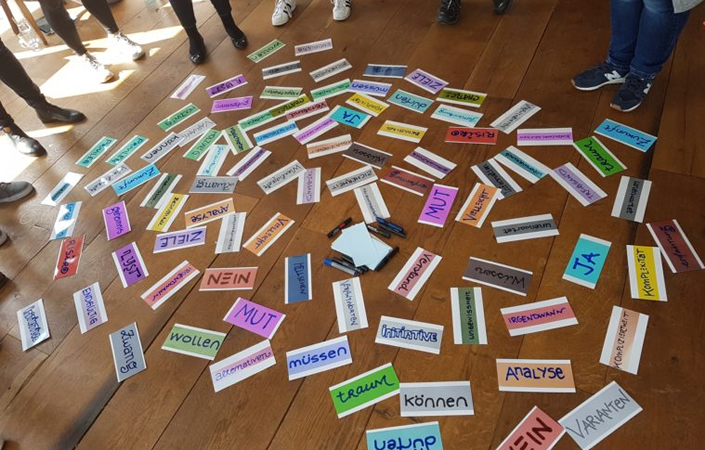
Does »Agility« and »Controlling« fit together? On the ICV ControllingBlog Hans-Peter Sander, Head of the ICV Team PR/New Media, tells about his Agile Culture Coach training that he completed in five modules in 2017 at SYNNECTA. Today: »Agile Teams and Collaboration«
If a company wants to be successful in the market, it needs creative, well-functioning employees. People work well when they enjoy doing it. For this they must find satisfaction in their actions. Above all, they need a meaningful job, a chance to work when and how much they want. And they need recognition from the community. For agile teams: The leadership must provide for appropriate conditions. Because agile work is by no means arbitrary, but has clear frames and orders. – How it all works, the Module IV of the Agile Culture Coach training informs, under the heading »Agile Teams and Collaboration«. Renate Standfest and Fetiye Sisko, both principals at SYNNECTA, both experienced female coaches, guide this elementary, exciting, instructive part of the training, as well as deep insights into the group of participants.
The starting point is the question how an »agile team« is composed, and which factors determine its success. Interesting discussions arise e.g from the outlined ideal of the »cross-functional« and »self-organized« team, in which a so-called »musketeer attitude« (»one for all – all for one!«) prevails, and in which the so-called »bus« factor applies (no head monopolies, pair programming) and work in the »T-Shaped Professionals«; Employees who combine the strengths of a generalist and a specialist.
Many exciting conversations in this workshop, based on Module III »Agile Methods and Scrum«, build the success factors of agile teams:
- Clearly defined job for the team
- Joint learning (for example dealing with a missing hierarchy)
- Role clarity, role uniqueness
- Impediments are identified but ignored
- Retros/Reviews not according to scheme F!
- Key skills: self-reflection, self-criticism, questioning everything!
- »Roles instead of jobs« (flat or no hierarchy, responsibilities)
Fuel for thought provides a lively discussion on the subject of »fundamental orders in social systems«. For example, what are the consequences if »affiliation takes precedence« (in the sense of: »every employee is equivalent«)? All members should be considered in important decisions; also difficult. And is the second »principle of temporal order« (»who is there longer, takes precedence«) not often violated in processes of change, by only favoring and praising what’s new?
The next principle, »Higher commitment takes precedence«, points in particular to the fact that leadership or executives must not be called into question; Managers, however, have to develop their position through greater commitment, leadership skills and behavior. And if the principle, »competence and achievement take precedence«, applies, special achievement, effectiveness, abilities should be shown; how can (power) conflicts arising from this be solved? The next principle, »acknowledging what is«, is to recognize realities that are no longer changeable: saving personal energy, letting go of the old helps to turn to something new. And finally, the principle of »giving and taking« has its deep meaning: where there is a balance between giving and taking, social relations can also harmonize.
Agility and conflicts
In this training module, a lot of place take up conflicts in an agile context. It starts with an interesting discussion on dealing with conflicts concerning culture: corporate, leadership or error culture. It’s intensively taught, as in all components of the training again with playful exercises, how to deal with conflicts within agile teams. The participants experience e.g. something about »systemic consensus«: Instead of using the sledgehammer approach »The stronger wins«, proceeding with the approach »What is important to us together?« and finding a solution. I noted an interesting quote: »The respect for a human being is shown in dealing with his No.«
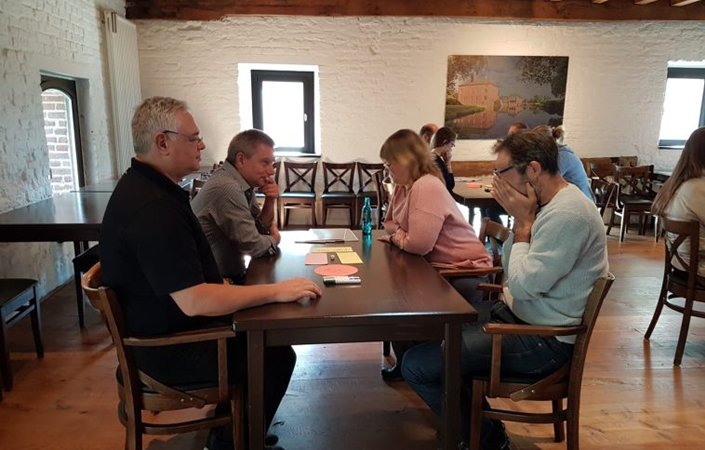
Finally, »Conflict Dojo« is a highlight on the first day of the seminar. In the playful conflict training, the players meet in small groups in several rounds on different character types and must deal with them: from a stubborn resistance through a conflict violent or a compassionate to a solution-seeker. (Picture: role playing at the »Conflict Dojo«)
Diversity: Elementary topic for successful agile teams
An important part of Module IV is »Diversity«. The seminar leaders convince with sensitivity that it is an elementary topic for successful agile teams. They succeed, like a simple-sounding and challenging task of everyday life, in recognizing commonalities and differences, preventing any discrimination, sensitizing them in different exercises. The seminar participants become familiar with creating the necessary transparency in taboo topics and getting to know formal as well as informal rules as well as tools for agile teams.
For example, while working with a »Diversity Insight Picture«, it is about the participants‘ reflection on diversity in themselves, but also in their experience, in the professional world as well as in the world as a whole. In organizations, this can be an analytical tool to explore needs in the context of business goals. It can help in the diversity strategy development and in the change of the corporate culture. In another exercise, the diversity lineup is tested: a highly emotional experience for some participants.
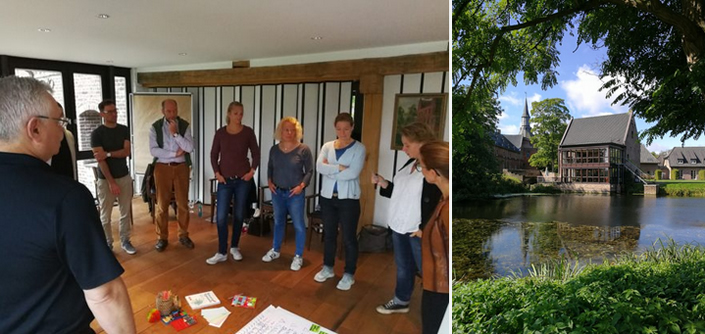
A weekend seminar with many group exercises – in picturesque surroundings, the Seminarhotel Schloss Wissen.
Hans-Peter Sander
blog.icv-controlling.com
28. November 2017
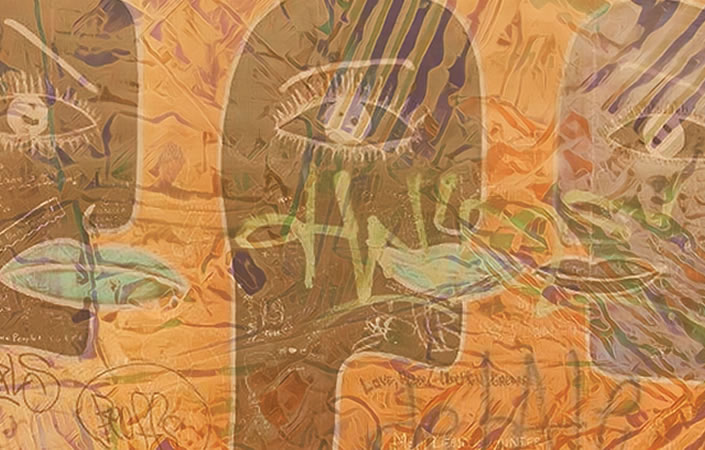
Agility is the answer enterprises have found to a changed world and to a changed context of doing business. Society, markets and the competitive landscape have changed to possess a greater degree of contingency – in the phrasing of companies today, this is known as the VUCA World. Agility is an answer that aims for a highly responsive organization. Responsiveness includes speed – specifically decision making speed -, flexibility, an acute awareness of changes outside of the company, the ability to read weak indicators and a high degree of reactivity. The pillars supporting an agile organization are:
- fitting methods (like design thinking, scrum, working out loud, etc.)
- a fragmented company with smaller, market-oriented organizational units
- the building of a support hub containing every function that can be standardized and lean
- a suitable mindset that supports a culture of respect, listening, contradicting, learning – in short: a non-hierarchical culture
The methods are already given and well-defined, the blueprints for a fragmented organization and a supporting hub are on the table. What is painfully missing is the culture, the agile culture. The hoped-for simple adoption of a start up culture has failed because what is at stake here is a culture change within complex, historically grown organizations, which each have their own strong individual cultures.
Once we take a closer look at the elements of agility, it is staring us in the face: the keystone to developing an agile culture is diversity. We describe the world outside of a company as VUCA; what we perceive at the core of VUCA is its diversity. This diversity entails the interaction of different cultures, different ways of describing the world, in order to understand life, to take decisions, engage in other ways of social bonding and finding purposes in life. We can only be able to be responsive to this situation once we have fully understood it. In order to reach that understanding of diversity, we need to experience it within our company.
What are the advantages of a company that is strong in diversity? Diversity seems to be a competitive differentiator, and it fosters a better financial result compared to less diverse companies. More diverse companies are winning more top talents, are improving their customer orientation and have a deeper understanding of developments on the markets. There are many hard fact reasons for which to start a strong diversity approach. Diversity Management, along with all the criteria for diversity, is therefore not only a political issue: it’s a business issue. Coming back to Agility: the name of the agile mindset is Diversity.
Rüdiger Müngersdorff

 Illustration: SYNNECTA Diversity Insight Map®
Illustration: SYNNECTA Diversity Insight Map®





